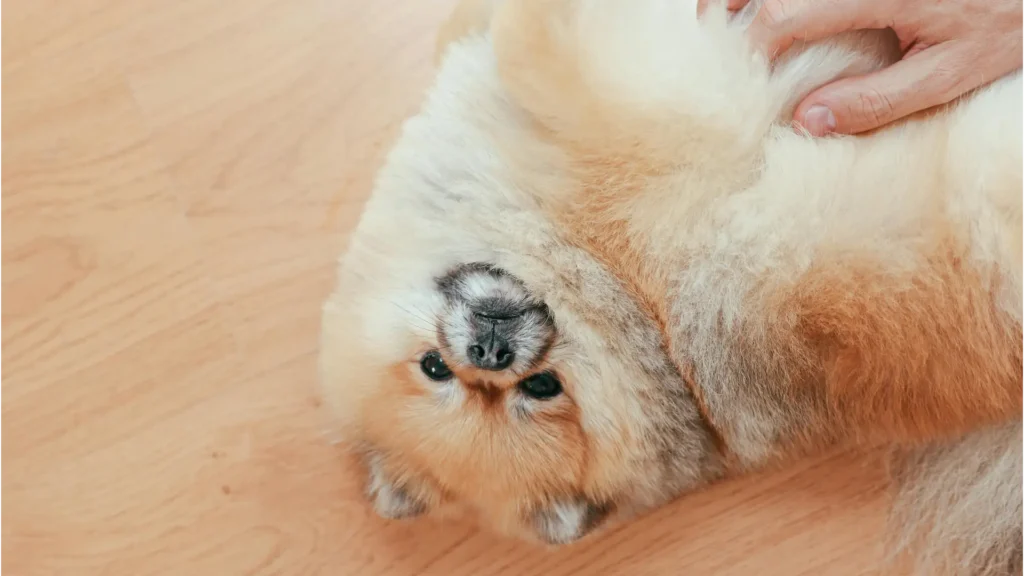Spending time with your furry friend is essential for their physical and mental well-being. Fortunately, there are plenty of fun games you can play with your dog to keep them entertained. These indoor games strengthen the bond between you and your pup. Here are some exciting games to try with your dog indoors.
Hide and Seek
This classic game is a favorite among dogs and humans alike. It taps into your dog’s natural instinct to search and find. This is fun and mentally stimulating.
Start by teaching your dog the “stay” command if they don’t already know it. Once they’re comfortable staying in one spot, you can begin the game.
Have your dog stay in one room while you hide somewhere else in the house. Choose a hiding spot that’s not too difficult at first. Once you’re hidden, call your dog’s name or use a cue word like “Find me!” to encourage them to come looking for you.
When your dog finds you, make sure to reward them with praise, or treats. This positive reinforcement will motivate them to keep playing and searching. As your dog gets better at finding you, you can increase the difficulty by hiding in challenging spots.
If your dog struggles to understand the game initially, try hiding behind a partially open door or around a corner where they can still see part of you. Gradually increase the level of concealment as they get the hang of it.
Hide and Seek is an excellent way to engage your dog’s sense of smell and problem-solving skills. It also reinforces recall commands. It is crucial for their safety during outdoor adventures. Additionally, this game strengthens the bond between you and your dog.
Tug-of-War
Tug-of-war is a great way to engage your dog physically and mentally.
To play tug-of-war, you’ll need a sturdy rope toy or tug toy designed specifically for dogs. Hold one end of the toy while your dog grabs the other. Encourage them to pull. Establish clear boundaries from the start.
For example, if your dog starts mouthing your hands, biting too hard, and becomes overly aggressive, stop the game immediately.
Use a command like “gentle” or “easy” to remind them to play nicely. If they continue to break the rules, take a short break.
You can also incorporate commands like “drop it” or “leave it” during the game to practice impulse control. Ask your dog to release the toy on command, and only resume playing once they’ve obeyed. This helps reinforce good behavior and teaches them to respect boundaries during playtime.
Tug-of-war provides a full-body workout for your dog. This strengthens their jaw muscles and improves physical fitness. It also helps burn off excess energy. Moreover, this game teaches impulse control and reinforces basic obedience commands.
Treasure Hunt
Turn mealtime into an exciting treasure hunt that gets your dog using their nose.
Start by dividing your dog’s kibble into small portions. Begin with easy hiding spots, such as under a blanket, behind a pillow, or inside an open box.
Let your dog watch you hide the first few treats so they understand the concept. Then, encourage them to sniff out the hidden goodies by saying something like, “Find it!” or “Where’s your treat?”
As your dog becomes skilled at finding the treats, you can make the game more challenging by hiding them in less obvious places, such as inside closed boxes, under furniture, or on higher surfaces. You can also scatter the treats throughout multiple rooms to create a larger hunting area.
For added mental stimulation, you can combine the treasure hunt with puzzle toys.
The treasure hunt game engages your dog’s natural scavenging instincts. This provides mental and physical stimulation. Sniffing and searching for hidden treats require focus and problem-solving. This game also slows down fast eaters and makes mealtime enjoyable for dogs.
Obstacle Course
Create a mini agility course in your living room using household items like chairs, pillows, and boxes. This is a fantastic way to keep your dog physically active indoors.
Drape a blanket over two chairs to create a tunnel for your dog to crawl through. Use low furniture as hurdles for your dog to jump over. Make sure the height is appropriate for your dog’s size and ability. Line up water bottles in a row. Guide your dog through the weave poles by luring them with a treat.
Once the course is set up, guide your dog through each obstacle using treats. You can teach them specific commands like “jump,” “crawl,” or “weave” to navigate the course. Start with just a few obstacles and gradually add more as your dog becomes confident.
If your dog struggles with certain parts of the course, break it down into smaller steps and reward them for each successful attempt.
An indoor obstacle course improves your dog’s coordination, balance, and agility. It also builds confidence as they learn to tackle new challenges. Additionally, navigating the course requires focus and obedience.
Fetch with Soft Toys
If you have enough space, playing fetch with soft toys is a great way to tire out your dog. You can easily play this game at home.
Playing fetch indoors requires a bit of preparation to ensure safety and prevent accidents. Start by selecting a soft plush toy. The advantage of soft toys is that these items won’t cause damage if it accidentally hits furniture, or other objects in your home. A lightweight fabric toy or a foam ball works well for indoor fetch.
Begin by throwing the toy a short distance. Once your dog retrieves the toy, call them back to you and throw it again. If your dog doesn’t naturally return the toy, you can use a treat as an incentive to bring it back.
To make the game structured, incorporate commands like “fetch,” “drop it,” or “bring it.” For instance, say “fetch” before throwing the toy and “drop it” once your dog returns. Reward them with praise whenever they follow the command correctly. Over time, this will reinforce obedience and improve their focus.
Fetch provides excellent cardiovascular exercise. It helps burn off excess energy and keep your dog physically fit. It also strengthens their ability to focus and follow commands. Additionally, fetch builds trust and communication between you and your dog.
Interactive Puzzle Toys
Puzzle toys are excellent tools for keeping your dog mentally sharp.
Interactive puzzle toys come in various designs, from simple treat-dispensing balls to complex multi-step puzzles. Choose a toy that matches your dog’s skill level.
For beginners, opt for toys that require minimal effort, such as rolling a ball to release treats. For advanced dogs, select puzzles that involve sliding compartments, flipping lids, and spinning wheels.
To start, fill the puzzle toy with small treats. Show your dog how the toy works by demonstrating how to manipulate it. Then, let them figure out the rest on their own. If they seem confused, offer gentle guidance by pointing to the solution.
As your dog becomes skilled at solving the puzzles, gradually increase the difficulty by adding extra steps to the process. For example, some advanced puzzles require dogs to complete multiple actions in sequence to access the reward.
Puzzle toys challenge your dog’s problem-solving abilities and provide hours of entertainment. It reduces anxiety and destructive behaviors caused by boredom. They also promote cognitive health by engaging your dog’s brain and encouraging critical thinking. Additionally, these toys help slow down fast eaters and make mealtime enjoyable.
Training Sessions as Games
Incorporating training into playtime makes learning fun for your dog. Use positive reinforcement techniques to teach new tricks.
Training sessions don’t have to be boring. In fact, they can be turned into playful games that your dog looks forward to.
Start by breaking down complex tricks into manageable steps. For example, if you’re teaching your dog to “spin,” begin by luring them in a circle with a treat. Once they complete the motion, reward them immediately.
You can also turn basic obedience commands into challenges. For instance, practice “sit,” “stay,” or “come” in different parts of the house. Gradually increase the difficulty by adding distance, duration, and environmental factors like noise or movement.
For added excitement, incorporate obstacles into your training sessions. For example, teach your dog to jump through a hoop, weave between your legs, or crawl under a low table. Use toys, or verbal encouragement to motivate them throughout the session.
To keep things interesting, mix up the tricks and commands you work on during each session. This prevents your dog from getting bored and ensures they stay engaged.
Training sessions as games enhance your dog’s focus, and obedience. They also provide mental stimulation. Furthermore, turning training into a game makes it a positive experience for your dog.
Bubble Chasing
Some dogs love chasing bubbles, and this activity can be a delightful way to entertain them indoors.
Before starting, purchase pet-safe bubbles. These bubbles are non-toxic and formulated to be safe if accidentally ingested. Avoid using regular soap bubbles. They may contain ingredients that could irritate your dog’s skin.
Blow the bubbles gently and watch your dog chase and pop them. Some dogs need a little encouragement at first. Clap your hands at the bubbles to draw their attention. As your dog gets the hang of it, they’ll likely become enthusiastic about the game.
Supervise closely to ensure your dog doesn’t ingest too much bubble solution or become overly excited. Limit the game to short sessions to avoid overstimulation.
Bubble chasing provides light exercise and sensory stimulation. The unpredictable movement of the bubbles engages your dog’s natural prey drive and keeps them entertained. Additionally, this activity serves as a calming distraction for anxious dogs.
Nose Work Games
Nose work games tap into your dog’s powerful sense of smell. It offers a mentally enriching experience.
One of the simplest nose work games involves hiding treats under cups. Place several upside-down cups on the floor and hide a treat under one of them. Let your dog sniff out which cup contains the treat. Start with just a few cups and gradually increase the number.
For an advanced version of this game, move the cups around while your dog watches or distract them briefly before letting them search. You can also hide treats in different rooms to create a larger scavenger hunt.
Another fun variation is the “sniff-and-seek” game. Hide treats in various locations around the house and let your dog find them using their nose. Begin with easy hiding spots and progress to challenging ones as they improve.
Nose work enhances your dog’s scent detection skills. It taps into their natural instincts and offers mental stimulation. Nose work games help reduce anxiety and destructive behaviors by giving your dog a productive outlet for their energy and curiosity.
Playing games with your dog indoors doesn’t have to be complicated. With a little creativity, you can turn everyday objects and activities into engaging experiences for your canine companion. These activities will keep your dog happy, and entertained.




